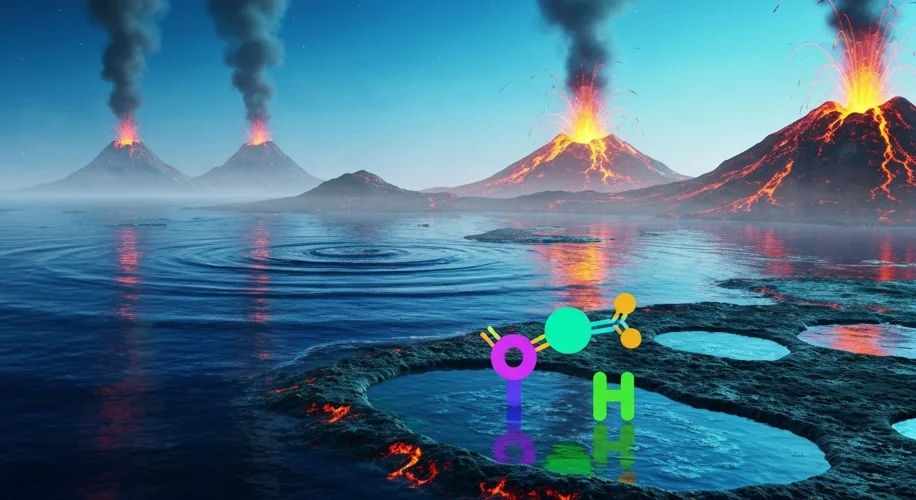Did you know that scientists might be getting closer to understanding how life first began on our planet? It’s a question that has fascinated humans for centuries: where did we all come from?
Recently, researchers have been exploring some really exciting ideas that go back to the very, very early days of Earth. Think about 4 billion years ago – a time very different from today.
Early Earth: A Different World
Our planet back then wasn’t the familiar blue marble we know. It was a much more volatile place. The atmosphere likely had a different mix of gases, possibly rich in things like methane, ammonia, and water vapor, but with very little free oxygen. Imagine a sky that wasn’t clear blue but perhaps more hazy or even a bit reddish.
Volcanic activity was probably rampant, and the oceans were warm. Energy sources were plentiful, from lightning strikes to ultraviolet radiation from the sun, which was much more intense without a protective ozone layer like we have today.
The Building Blocks of Life
Life as we know it is built from complex molecules like proteins and nucleic acids (DNA and RNA). The big question is: how did these complex molecules form from the simpler chemicals present on early Earth? Scientists have long hypothesized that simple inorganic molecules, under the right conditions, could have combined to form these essential organic building blocks. This process is often referred to as abiogenesis.
One key area of research involves understanding how amino acids, the components of proteins, could have been synthesized. Experiments in the past, like the famous Miller-Urey experiment in the 1950s, showed that amino acids could form when electrical sparks (simulating lightning) were passed through a mixture of gases thought to be present on early Earth. While that experiment used a specific atmospheric mix, new research continues to refine these ideas, looking at different potential environments and energy sources.
What’s New in the Lab?
Recent scientific investigations are focusing on specific conditions and chemical reactions that could have taken place in places like hydrothermal vents on the ocean floor or even in shallow, mineral-rich pools on land. These environments might have provided the necessary chemical ingredients and energy to catalyze the formation of more complex molecules.
For instance, some studies are looking at how minerals might have acted as catalysts, helping to assemble simpler molecules into more complex chains, like RNA. RNA is thought to be a crucial step, as it can both store genetic information and act as an enzyme, potentially being a precursor to both DNA and proteins.
Connecting to the Cosmos
This kind of research also ties into broader questions about life in the universe. If we can figure out how life started here on Earth under specific conditions, it helps us think about where else in the cosmos similar processes might be occurring. Are there other planets with the right atmospheric composition, energy sources, and chemical building blocks that could also give rise to life?
Understanding our own planet’s origin story is a fundamental step in the search for life beyond Earth. It gives us clues about what to look for and where to look. It’s a testament to human curiosity that we’re still unraveling these profound questions about where we came from.
It’s a journey of discovery that continues to push the boundaries of our knowledge, reminding us of the incredible, complex history of our own planet.

